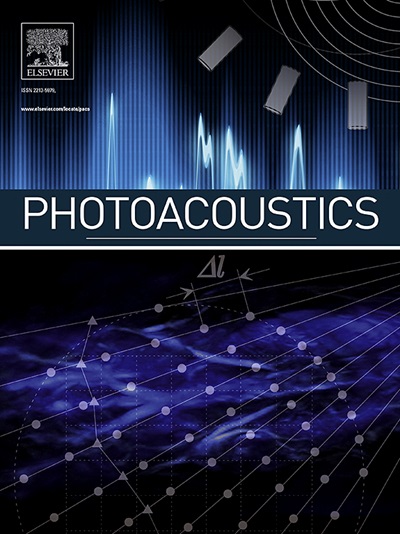对小鼠皮肤局部应用皮质类固醇导致血管收缩的体积光声定量评估
IF 7.1
1区 医学
Q1 ENGINEERING, BIOMEDICAL
引用次数: 0
摘要
外用皮质类固醇通过对免疫系统的作用来控制皮肤炎症。在皮肤上涂抹皮质类固醇的一个效果是外周血管收缩导致皮肤褪色。在某些情况下,这被用来描述相对效力,也是比较皮肤渗透性的一种方法。色度计已被用于评估皮肤褪色--外用皮质类固醇引起的血管收缩的结果,但不能直接测量血管收缩。在这里,我们展示了定量体积光声显微镜(PAM),它是一种直接评估局部应用皮质类固醇后血管收缩的工具,无需外来造影剂即可无创观察皮肤血管。通过多参数分析,我们用光声学方法区分了四种局部皮质类固醇在小动物身上的血管收缩能力,提供了不同皮肤深度血管收缩机制的详细三维视角。我们的研究结果凸显了 PAM 作为测量比较性血管收缩的无创工具的潜力,它在临床、制药和生物等效性应用方面具有潜力。本文章由计算机程序翻译,如有差异,请以英文原文为准。
Quantitative volumetric photoacoustic assessment of vasoconstriction by topical corticosteroid application in mice skin
Topical corticosteroids manage inflammatory skin conditions via their action on the immune system. An effect of application of corticosteroids to the skin is skin blanching caused by peripheral vasoconstriction. This has been used to characterize, in some cases relative potency and also as a way to compare skin penetration. Chromameters have been used to assess skin blanching—the outcome of vasoconstriction caused by topical corticosteroids—but do not directly measure vasoconstriction. Here, we demonstrate quantitative volumetric photoacoustic microscopy (PAM) as a tool for directly assessing the vasoconstriction followed by topical corticosteroid application, noninvasively visualizing skin vasculature without any exogeneous contrast agent. We photoacoustically differentiated the vasoconstrictive ability of four topical corticosteroids in small animals through multiparametric analyses, offering detailed 3D insights into vasoconstrictive mechanisms across different skin depths. Our findings highlight the potential of PAM as a noninvasive tool for measurement of comparative vasoconstriction with potential for clinical, pharmaceutical, and bioequivalence applications.
求助全文
通过发布文献求助,成功后即可免费获取论文全文。
去求助
来源期刊

Photoacoustics
Physics and Astronomy-Atomic and Molecular Physics, and Optics
CiteScore
11.40
自引率
16.50%
发文量
96
审稿时长
53 days
期刊介绍:
The open access Photoacoustics journal (PACS) aims to publish original research and review contributions in the field of photoacoustics-optoacoustics-thermoacoustics. This field utilizes acoustical and ultrasonic phenomena excited by electromagnetic radiation for the detection, visualization, and characterization of various materials and biological tissues, including living organisms.
Recent advancements in laser technologies, ultrasound detection approaches, inverse theory, and fast reconstruction algorithms have greatly supported the rapid progress in this field. The unique contrast provided by molecular absorption in photoacoustic-optoacoustic-thermoacoustic methods has allowed for addressing unmet biological and medical needs such as pre-clinical research, clinical imaging of vasculature, tissue and disease physiology, drug efficacy, surgery guidance, and therapy monitoring.
Applications of this field encompass a wide range of medical imaging and sensing applications, including cancer, vascular diseases, brain neurophysiology, ophthalmology, and diabetes. Moreover, photoacoustics-optoacoustics-thermoacoustics is a multidisciplinary field, with contributions from chemistry and nanotechnology, where novel materials such as biodegradable nanoparticles, organic dyes, targeted agents, theranostic probes, and genetically expressed markers are being actively developed.
These advanced materials have significantly improved the signal-to-noise ratio and tissue contrast in photoacoustic methods.
 求助内容:
求助内容: 应助结果提醒方式:
应助结果提醒方式:


